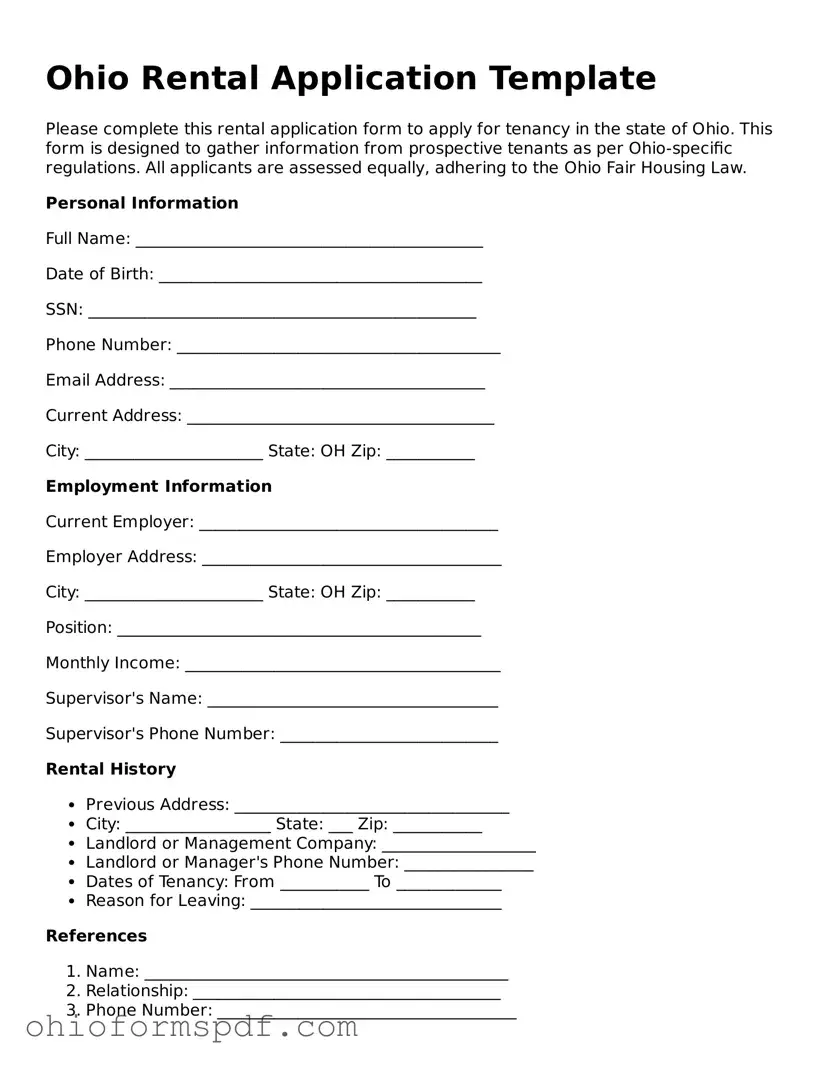Ohio Rental Application Template
Please complete this rental application form to apply for tenancy in the state of Ohio. This form is designed to gather information from prospective tenants as per Ohio-specific regulations. All applicants are assessed equally, adhering to the Ohio Fair Housing Law.
Personal Information
Full Name: ___________________________________________
Date of Birth: ________________________________________
SSN: ________________________________________________
Phone Number: ________________________________________
Email Address: _______________________________________
Current Address: ______________________________________
City: ______________________ State: OH Zip: ___________
Employment Information
Current Employer: _____________________________________
Employer Address: _____________________________________
City: ______________________ State: OH Zip: ___________
Position: _____________________________________________
Monthly Income: _______________________________________
Supervisor's Name: ____________________________________
Supervisor's Phone Number: ___________________________
Rental History
- Previous Address: __________________________________
- City: __________________ State: ___ Zip: ___________
- Landlord or Management Company: ___________________
- Landlord or Manager's Phone Number: ________________
- Dates of Tenancy: From ___________ To _____________
- Reason for Leaving: _______________________________
References
- Name: _____________________________________________
- Relationship: ______________________________________
- Phone Number: _____________________________________
Additional Information
Describe any pets: ____________________________________
Will you have anyone else living with you? ______________
If yes, please list their names and relationship to you: ______________________________________________________
Do you smoke? ___ Yes ___ No
Have you ever been evicted? ___ Yes ___ No
If yes, please provide details: _________________________
By signing below, you authorize the verification of the information provided on this form as to your credit and employment. You understand that false or incomplete information may be grounds for rejection of this application, termination of right of occupancy, and/or forfeiture of deposits according to Ohio laws.
Applicant Signature: ___________________________________
Date: ________________________________________________
